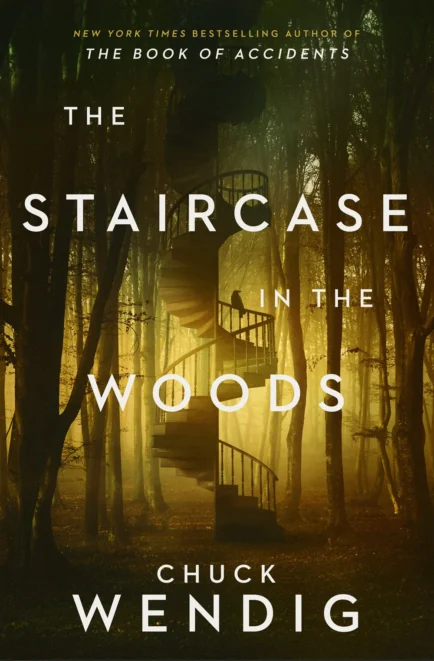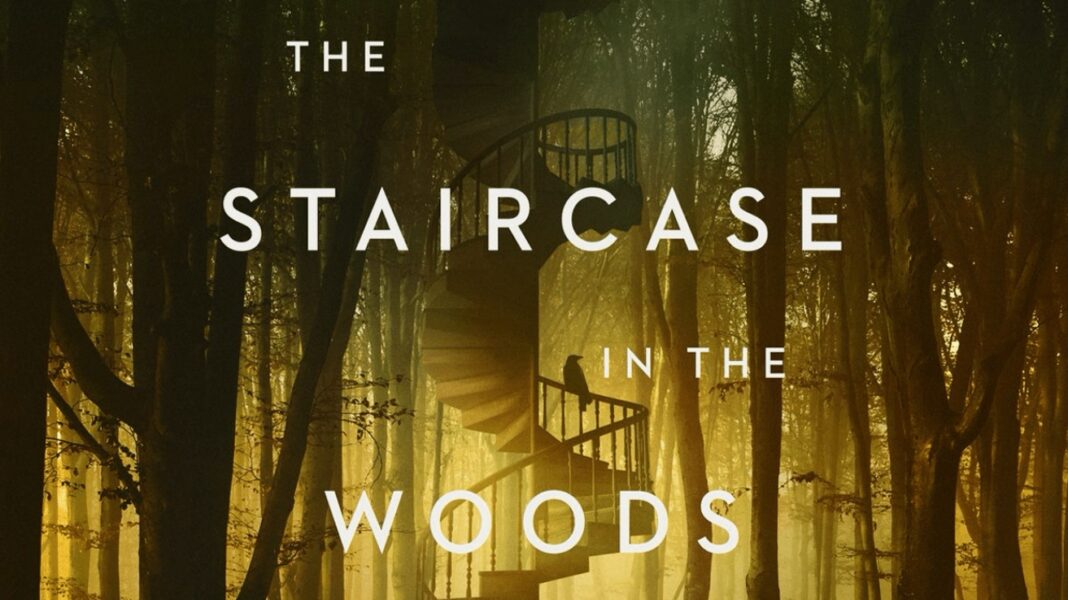Over the past decade, Chuck Wendig has not only proven himself as a prolific author, churning out one to two books a year since 2013, but he’s also become a jack-of-all-trades, offering quality stories in a variety of genres.
Wendig has taken his turn at Marvel Comics and had a brilliant in-canon Star Wars novel trilogy, but he’s always gravitated toward horror (and a touch of science fiction), both in middle-grade and adult standalone novels. The horror genre is where he’s found the most recognition, becoming a three-time Bram Stoker Award nominee for Wanderers (2019), The Book of Accidents (2021), and Black River Orchard (2023).
His newest novel, The Staircase in the Woods, may be his most in-depth glimpse into the horror of the human psyche, while exploring the very real “staircase in the woods” phenomenon that people all over the world have reported. The phenomenon details times when people stumble on a staircase in a very unusual setting; a forest, a desert, a swamp, either leftover from an eroded residence, or seemingly attached to nothing at all, and oftentimes, if climbed, leave the climber feeling a cold and odd presence. It’s spooky stuff.
The Staircase in the Woods follows five outcast friends over two different timelines. The first being in the late 1990s, when the group (who refer to themselves as “The Covenant”,) stumbled upon a lone staircase in the middle of the forest during a night of drinking and drugs. Matty, the “good egg” of the group, climbs the staircase to prove a point, but vanishes as another world seemingly opens up and swallows him. Matty is gone, and the staircase disappears soon after.
Related: ‘Senseless’ Book Review: Weaves an Unpredictable Web of Crime & Horror
Fast forward multiple decades layered with accusations of murder and hatred from the community, and the other members of The Covenant are called together by one of their own, Nick, who tells the group he’s sick with cancer and wants to have one last hurrah with the friends he’s disconnected from over the years. Nick leads the group on an impromptu camping trip, and reveals that after non-stop research, he’s found another staircase, and this time, he’s pleading that the group owes it to Matty to climb the staircase and search for answers.
The mysterious hook was enough to get me invested in the story, and the payoff of what lies beyond the staircase’s peak was emotionally cavernous and horrific. No spoilers here, but Wendig’s descriptors of a unique, liminal, and hellish setting are enough to prickle your skin. It exhausts you in the cathartic way that watching trauma horror films does. I will say as a warning: the story does include mentions of sexual abuse and animal abuse.
While the novel’s characters aren’t exactly likable, they are relatable in their own ways; they all experience individual (and extremely real) generational trauma that makes them the way they are. Sometimes characters don’t need to be enjoyed for them to be understood and sympathized with. I’m just as invested in flawed characters as I am in likeable ones, maybe more so, and these characters are as flawed as they come.
Wendig’s seamless transitions from the past to the present move the story along smoothly, giving the reader little pieces of each character and the overarching morale and camaraderie of The Covenant. There was never a moment when I got bored. The development and progression of the characters were constant, and the story was connected by straight-up scary moments.
Choosing a real-life phenomenon and referential time periods throughout the book gave it a subtle historical fiction feel, adhering to my affinity for that genre blend with horror.
As someone who has read a few (but not enough) of Wendig’s books, I even caught the small references from his other books, like Wanderers and Black River Orchard, making it feel like a connected universe. Thematically, though, The Staircase in the Woods felt right at home with horror novel powerhouses like Stephen King’s IT and Craig DiLouie’s Episode 13.
Related: ‘Never Flinch’ Book Review: Stephen King’s New Holly Gibney Story Is Good… Enough
Admittedly, I was worried about how the final act would turn out. A lot of similar-themed books just can’t seem to nail the ending, but Wendig took his time (but not too long) and covered his bases. It wasn’t predictable, and it wasn’t too weird. I’m not sure if he plans to expand on the story in further books, but his ending works as either a final thought or one to be continued.
Overall, I loved The Staircase in the Woods. For me, it was the perfect mix of character exploration and surprisingly dreadful moments. If you’re a fan of liminal horror, with some aspects of dark fantasy, you’re bound to enjoy, or at least be pleasantly creeped out. I highly recommend giving this one a go.
The Staircase in the Woods is published by Del Rey and is available at all major book retailers.

We’re hardworking geeks who love to geek out, but we can’t do it without you! If you enjoyed this article and want to see more like it, please consider tipping our writers. Also, as an Amazon Associate, we earn from qualifying purchases.
















